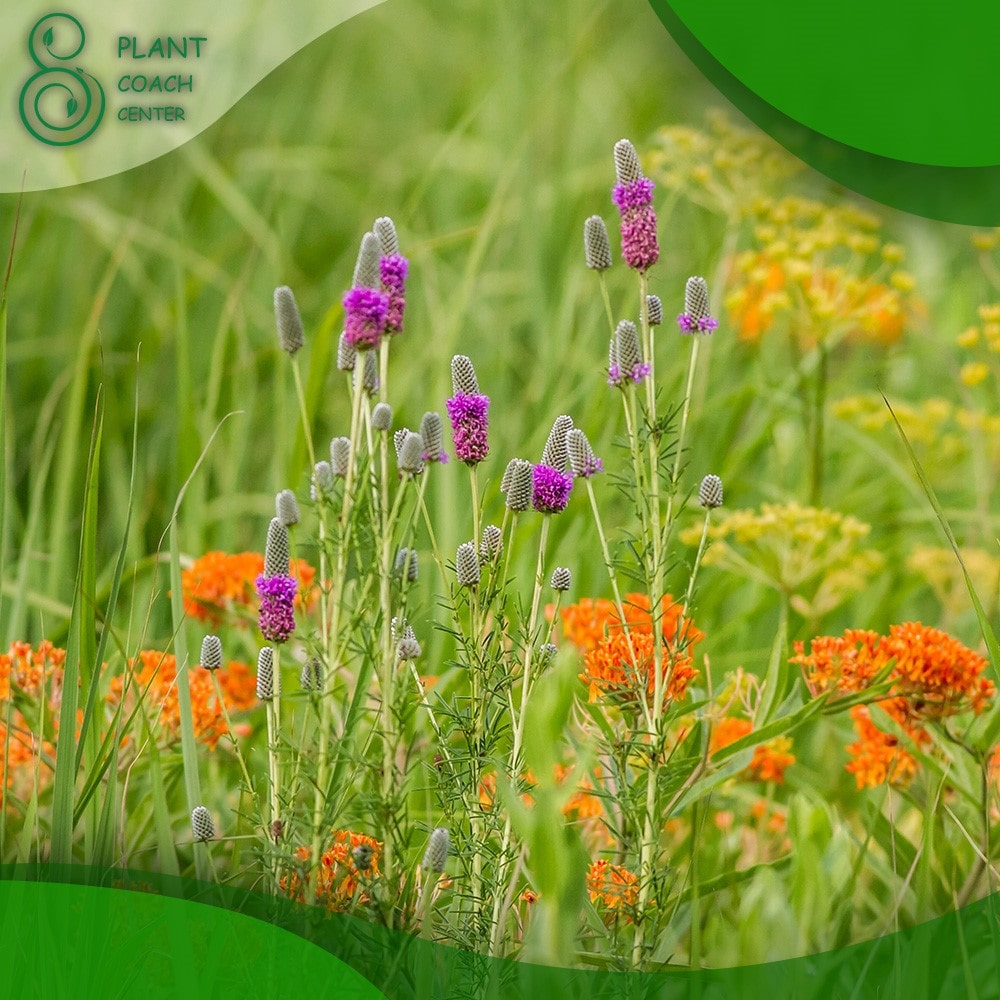When Do You Plant Milkweed?
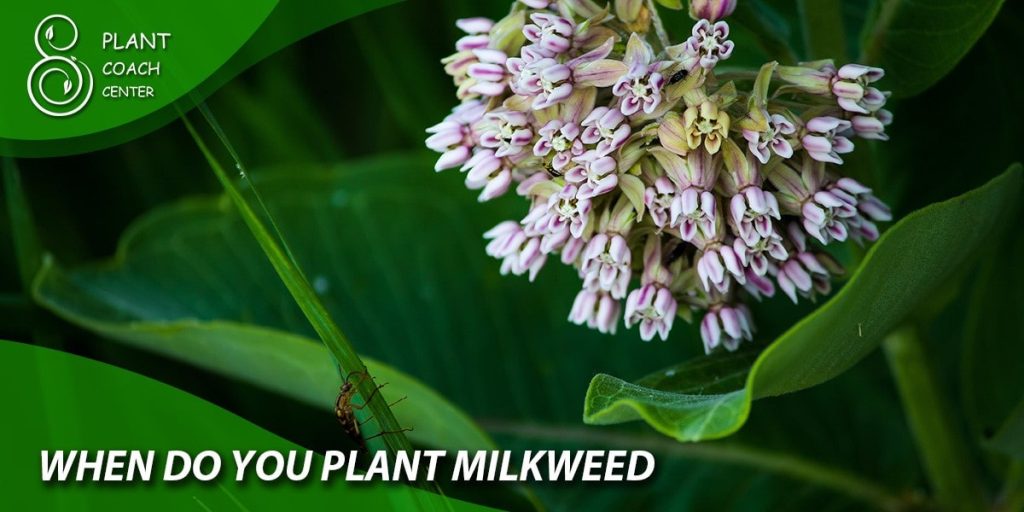
Welcome to a world of botanical wonder and ecological harmony as we explore the enchanting realm of milkweed planting. As custodians of our planet, it’s our privilege and responsibility to cultivate spaces that reflect nature’s beauty and nourish its intricate inhabitants.
Within this verdant tapestry lies the captivating relationship between milkweed and monarchs—a story of coexistence and migration that underscores the delicate balance of our ecosystems. The question “When do you plant milkweed?” opens the door to a wealth of knowledge, a tale told in petals and leaves, a dialogue between seasons and species.
Join us as we unravel the temporal secrets of milkweed cultivation, understanding the optimal timing for planting and its profound impact on sustaining the delicate threads of life that connect us all. Whether you’re a seasoned gardener or just beginning to discover the joy of nurturing green energy, this exploration will empower you to contribute to a world where flora and fauna flourish hand in leaf.
Harbinger of Spring: Milkweed Planting Timeline
As the frost of winter melts away and the days gradually lengthen, the earth awakens from its slumber, and with it comes the perfect opportunity to sow the seeds of enchantment in your garden through milkweed planting.
The timing of when to plant milkweed is a crucial factor determining the success of your garden’s transformation into a haven for pollinators, particularly the iconic monarch butterfly.
Early Spring
As the first hints of spring emerge, usually around March or early April, it’s time to prepare the soil for your milkweed seeds or plants. Clear away debris, loosen the ground, and ensure proper drainage. If you’re starting from sources, consider indoor germination during this period to give your plants a head start.
Mid-Spring
By mid-spring, the danger of frost has passed chiefly in many regions, making it suitable for transplanting any indoor-started milkweed seedlings. This is also when you can sow milkweed seeds directly into the ground. The warming temperatures and increased sunlight will aid their germination and early growth.
Late Spring
The soil is now consistently warm as late spring approaches, creating ideal conditions for milkweed growth. By this time, both indoor-started seedlings and directly sown seeds should have taken root and begun to establish themselves. Keep a watchful eye for any signs of pests or diseases and address them promptly to ensure the health of your milkweed.
Seasonal Dance: Matching Milkweed Planting to Your Region
Just as a choreographer tailors dance moves to suit the rhythm of the music, successful gardeners adapt their actions to the melody of their region’s climate.
When it comes to milkweed planting, understanding the seasonal nuances of your area is critical to nurturing a thriving and vibrant habitat for both plants and pollinators, particularly the cherished monarch butterflies.
Temperate Climates
In regions with temperate climates, where distinct seasons mark the calendar, early spring is usually the prime time for milkweed planting. The soil warms as the last frost retreats, creating a nurturing bed for milkweed seeds or transplants. This ensures that the plants have ample time to establish themselves before the heat of summer arrives.
Mild-Winter Climates
If you reside in areas with milder winters, such as Mediterranean climates, you’re presented with the luxury of extended growing seasons.
Fall and early winter become opportune moments to plant milkweed, capitalizing on the gentle temperatures and ample sunlight. This strategic timing allows the plants to take root before the cooler months and be ready to thrive when spring beckons.
Tropical Climates
In tropical regions where the line between seasons is less distinct, the key is often to avoid the hottest and wettest periods. Planting during the cooler and drier times of the year is advisable, as it minimizes stress on the milkweed plants and ensures they can establish themselves without facing excessive heat or waterlogged soil.
Mountainous Regions
High-altitude locales pose unique challenges with cooler temperatures and shorter growing seasons. Here, planting in late spring to early summer when the threat of frost has diminished is recommended. This gives the milkweed plants a better chance to mature before the cold returns.
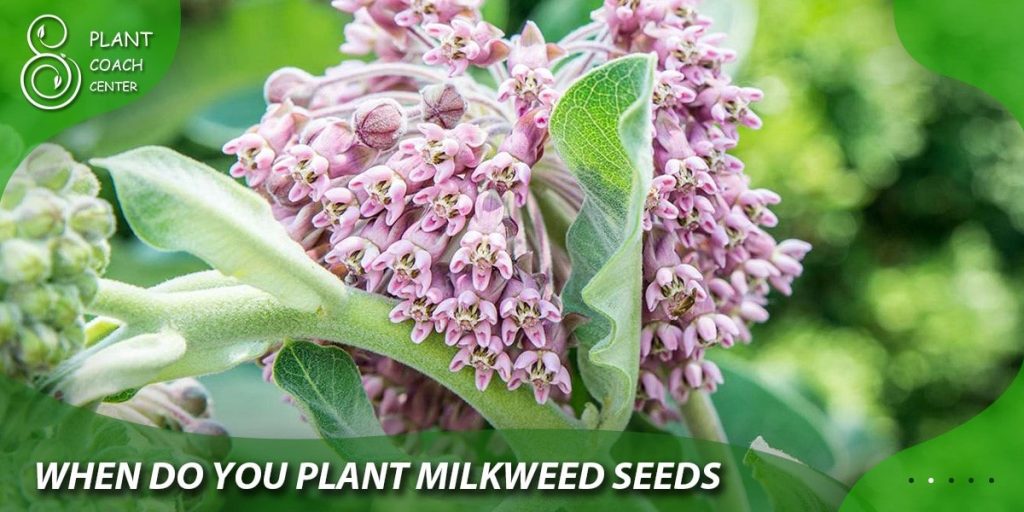
Cultivating Connection: Milkweed and Monarch Migration
Imagine a grand migration, a spectacle that spans thousands of miles and bridges continents—a journey undertaken by creatures that weigh less than a gram. This is the extraordinary odyssey of the monarch butterfly, an intricate journey intertwined with the presence of milkweed.
To truly understand the significance of the milkweed planting timeline, one must delve into the captivating narrative of the monarch migration.
Birthplace and Nectar Oasis
Milkweed isn’t just any plant; it’s the monarch’s birthplace. Female monarchs lay their eggs exclusively on milkweed leaves. The emerging caterpillars feast voraciously on the milkweed’s leaves, gaining the sustenance needed to transform into butterflies.
But the bond doesn’t end here The nectar-rich flowers of milkweed become crucial pit stops for adult monarchs during their migratory journey, offering them the energy required to continue their flight.
Timing is Everything
The monarch migration, spanning North America to central Mexico, is a marvel of timing. Monarchs embark on their journey at specific times, synchronized with the availability of milkweed in various regions.
Planting milkweed in sync with the monarchs’ migration is an act of support—a beacon of hope that aids these delicate travelers. Early plantings offer essential sustenance to those beginning their journey, while late-season blooms nourish those returning south.
Strengthening the Chain
You become an integral link in the monarch’s migration chain by planting milkweed in your garden. No matter how small, your garden contributes to preserving this awe-inspiring phenomenon.
As you watch monarchs flutter amidst your milkweed blooms, you witness the beauty of nature’s interconnectedness—how a simple act of planting can reverberate across continents and through generations.
Milkweed Varieties and Their Temporal Preferences
Each variety boasts unique charm and personality in the vast garden of milkweed species. Their temporal preferences for planting are just as diverse as their appearances and habitats. Exploring the world of milkweed varieties and their nuanced timing requirements adds excitement to your gardening endeavors.
Common Milkweed (Asclepias )
This iconic native species is known for its pinkish-purple clusters of flowers and its critical role in supporting monarchs. Common milkweed thrives when planted in early to mid-spring when monarchs begin migrating. Ensuring this milkweed variety is available and thriving early in the season provides essential sustenance for the newly hatched caterpillars.
Butterfly Weed (Asclepias tuberosa)
With its vibrant orange and yellow blossoms, butterfly weed is a favorite among pollinators. This variety prefers to be planted in late spring to early summer once the soil has warmed up and the threat of frost has passed. Its colorful flowers attract various pollinators, making it a delightful addition to any garden.
Swamp Milkweed (Asclepias incarnata)
As its name suggests, it thrives in wetter conditions and is an excellent choice for rain gardens. Plant this variety early to mid-spring, ensuring it has enough time to establish its roots before the summer heat. Its attractive pink flowers provide a source of nectar for butterflies and bees.
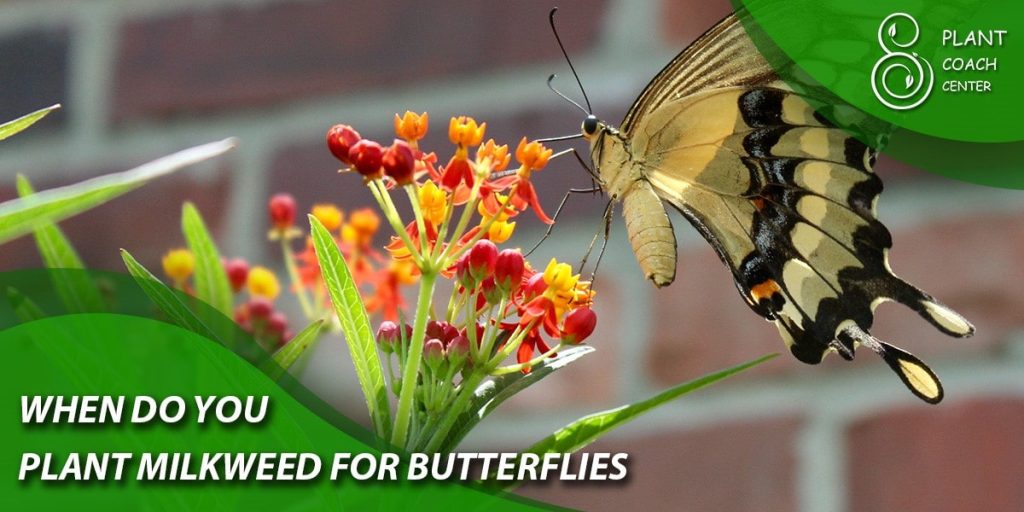
Showy Milkweed (Asclepias speciosa)
Native to western regions of North America, showy milkweed features large, intricate flower clusters. It’s best planted in early to mid-spring, taking advantage of the season’s mild temperatures and increased moisture. Showy milkweed provides nourishment for monarchs and other pollinators, contributing to the biodiversity of your garden.
Tropical Milkweed (Asclepias curassavica)
Unlike its native counterparts, tropical milkweed is not bound by a strict planting timeline due to its year-round growth in warmer regions. However, trimming this variety back in the fall is essential to discourage monarchs from lingering and potentially delaying their migration.
Jumpstarting Growth: Tips for Indoor Milkweed Seed Starting
For those eager to get a head start on their milkweed garden, indoor seed starting is rewarding. By providing a controlled environment for germination and early growth, you can ensure your milkweed plants are robust and ready to flourish when the outdoor planting season arrives. Here’s a step-by-step guide to help you embark on a successful indoor milkweed seed-starting journey.
Selecting Seeds
Begin by choosing high-quality milkweed seeds from reputable sources. Opt for native species well-suited to your region, as they tend to thrive better and support local pollinators.
Containers and Soil
Use seed trays or small pots with good drainage. Fill them with a light, well-draining seed-starting mix, providing a suitable germination substrate. Moisten the soil before planting.
Planting Seeds
Plant the milkweed seeds about 1/4 inch deep in the soil. If the roots are small, avoid burying them too deeply. Space them appropriately, following the guidelines on the seed packet.
Light and Warmth
Place the containers in a location with plenty of bright, indirect sunlight. If natural light is insufficient, use fluorescent or LED grow lights to provide the necessary illumination. Maintaining a consistent temperature between 70-75°F (21-24°C) encourages germination.
Watering
Keep the soil consistently moist but not waterlogged. Using a spray bottle to mist the soil surface can help prevent disturbing the seeds. Ensure proper drainage to avoid the risk of mold or fungal issues.
Transplanting
Once the seedlings have developed a couple of true leaves and are sturdy enough to handle, they can be transplanted into larger pots. This gives their roots more room to grow.

Hardening Off
Before transplanting your indoor-started seedlings outdoors, they must undergo a “hardening off.” Expose them to outdoor conditions, starting with a few hours of indirect sunlight and progressively increasing the time over several days. This helps the plants acclimate to the change in environment.
Transplanting Outdoors
After the last frost date in your area, when the outdoor temperatures are consistently warm, your seedlings are ready to be transplanted into your garden. Choose a spot with well-draining soil and follow the planting guidelines for your specific milkweed variety.
Late Bloomers: The Pros and Cons of Fall Milkweed Planting
While spring is the traditional season for planting, sowing milkweed seeds in the fall carries intrigue. Fall milkweed planting, although less common, presents advantages and challenges worth considering as you embark on your gardening journey.
Pros
Reduced Competition: Fall planting allows milkweed to establish its root system without competing with other fast-growing plants that typically dominate spring gardens. This can give milkweed a competitive edge regarding nutrients, sunlight, and water.
Established Root System: When spring arrives, fall-planted milkweed often boasts a well-developed root system. This allows the plants to focus on above-ground growth and flower production, potentially leading to a more robust and flowering-rich plant.
Less Maintenance: Fall-planted milkweed generally requires less maintenance during its initial stages, as it enters a period of dormancy during the winter. This can be advantageous for gardeners who prefer a more hands-off approach.
Cons
Frost Risk: One of the most significant challenges of fall planting is the risk of early frost damaging the young plants before they can establish themselves fully. This risk varies by region, making it essential to know your local climate.
Slower Growth: Fall-planted milkweed often has a slower growth rate in its first year than spring-planted counterparts. This slower growth might mean fewer flowers and less substantial growth during the first blooming season.
Uncertain Weather: Fall weather can be unpredictable, with temperature and moisture levels fluctuations. These conditions can impact the success of germination and early growth, potentially leading to inconsistent results.
Considerations
Before embracing fall milkweed planting, evaluating your local climate, frost dates, and the specific milkweed variety you intend to plant is vital.
The risks associated with frost damage might be minimized in regions with milder fall and winter conditions. Providing proper protection, such as using mulch to insulate the soil and covering plants during frosty nights, can mitigate potential challenges.
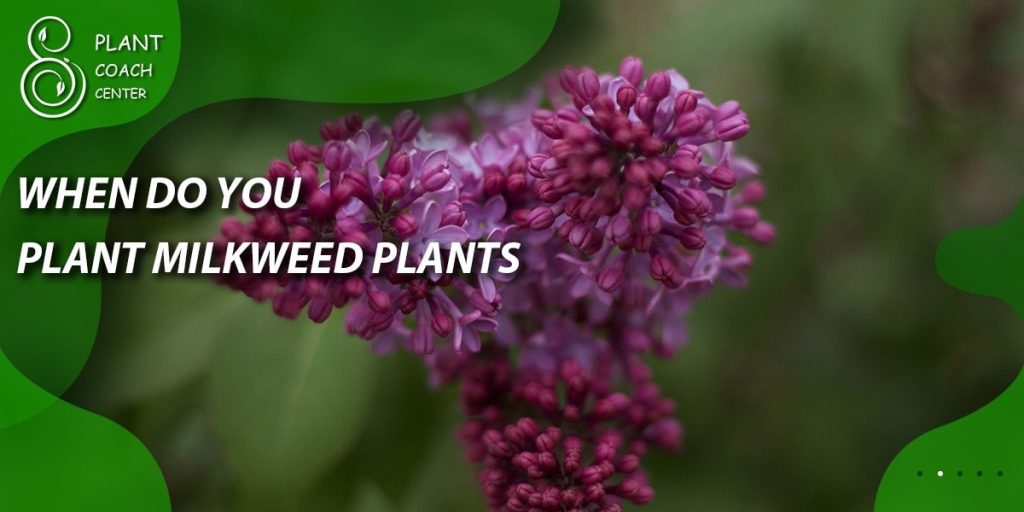
Conclusion
In the delicate choreography of nurturing nature, the question of when to plant milkweed unravels a profound symphony of connections. As we’ve ventured through the tapestry of milkweed planting, from the temporal preferences of diverse species to the mesmerizing relationship with monarch migrations, we’ve unearthed the art of harmonizing with the earth’s rhythms.
Whether you’re a seasoned gardener seeking to amplify your impact or a budding enthusiast embracing the enchantment of growth, the wisdom of understanding the optimal planting timeline reveals itself as a gift to both the garden and the planet.
The threads we weave through fall planting experiments or the dance of indoor germination ripple across ecosystems, resonating in butterflies’ fragile wings and pollinators’ hum. Let your garden become an ode to these harmonies, a sanctuary where life flourishes as nature intended.
For more insights into cultivating the beauty of our world, continue your exploration at PlantCouchCenter.com, where we delve into the heart of botanical wonders and the magic of fostering connections between flora, fauna, and the human spirit.
Can I plant milkweed in the fall?
Yes, fall planting is possible but it has pros and cons. Be cautious of frost and consider your local climate.
What's the best milkweed for monarchs?
Common milkweed (Asclepias ) is a favorite among monarchs as it supports their entire life cycle.
Should I start milkweed seeds indoors?
Starting seeds indoors gives milkweed a head start. Use well-draining soil, adequate light, and transplant when ready.


